Unit 9 Authority – Political Anthropology
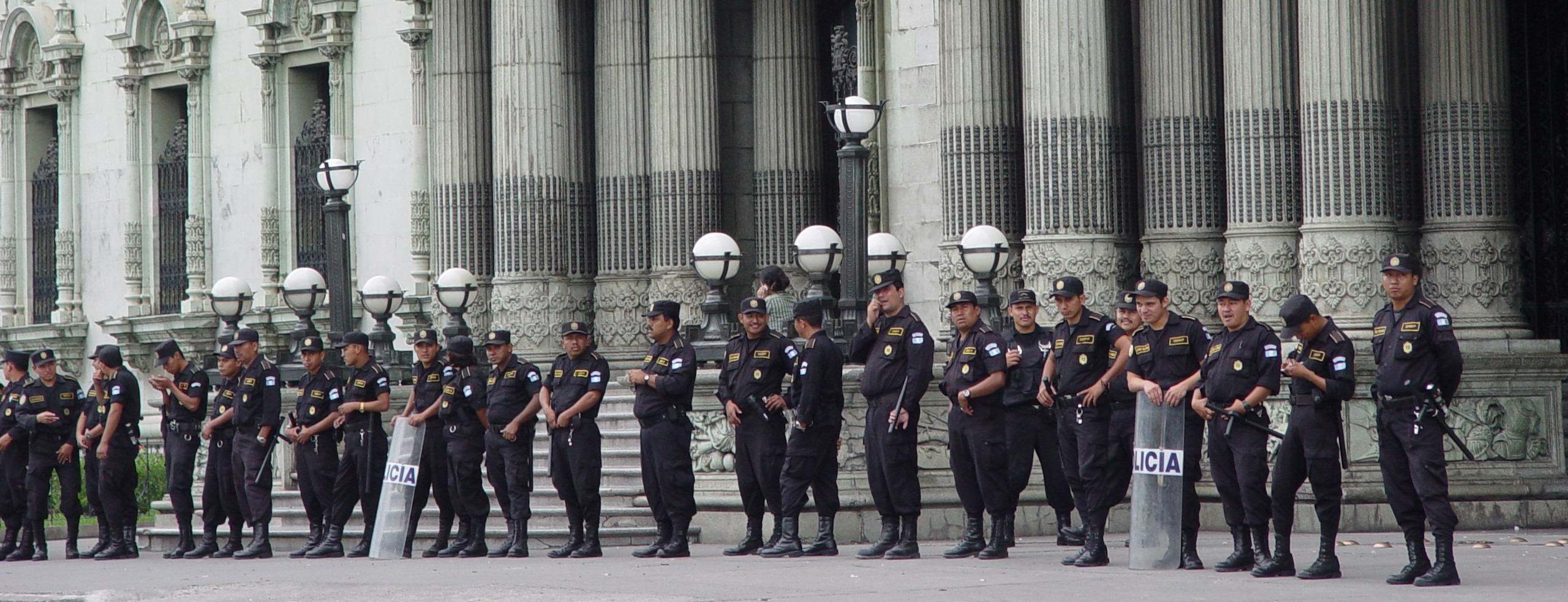
Palace army in front of the Parliament Building in Guatemala City. Photo by Ruth Anaya
Overview
This unit introduces you to the last topic for a systematic study of anthropology, by way of a comparative approach. Every society has some way of controlling its members and of dealing with conflict. Norms, religion, and political structures all guide behavior. This unit covers socio-cultural integration of small-scale band societies, to tribes and chiefdoms, and lastly the state.
Topics
This unit is divided into the following topics:
- Levels and Types of Social Integration
- Nations and Nation-States
Learning Outcomes
When you have completed this unit, you should be able to:
- Identify the four levels of socio-cultural integration (band, tribe, chiefdom, and state) and describe their characteristics.
- Compare systems of leadership in egalitarian and non-egalitarian societies.
- Describe systems used in tribes and chiefdoms to achieve social integration and encourage connections between people.
- Assess the benefits and problems associated with state-level political organizations.
- Explain the difference between nations and nation-states.
Activity Checklist
Here is a checklist of learning activities you will benefit from in completing this unit. You may find it useful for planning your work.
Topic 1 Resources
At the bottom of the page in Topic 1, students will find some important resources. There are a number of readings and slides for you to review.
Learning Lab
During this Learning Lab, students will engage in a conversation about resolving conflict in a “traditional” manner. To prepare for this discussion, students have been provided with some questions to consider. Below these questions, you will find a video. As you watch the video, consider how those questions apply to the content in the video. Your Facilitator will lead the discussion so arrive to the Learning Lab prepared to share your thoughts.
Assessment
At the end of Unit 9, students will complete their final Unit Test #4 assessment. This test will examine content studied in Units 8 and 9. More information, as well as the test, can be found at the bottom of the page.
Levels of Social Integration
It is difficult to understand culture without appreciating how political structures can influence culture. Political organization can be egalitarian and non-egalitarian in practice. Most of what we understand about political structures we know from the perspective of our own complex systems. Understanding this evolution, and appreciating simpler political systems is important as they impact culture in different, but similar ways.
Topic 1 Resources
The resources below will help you better understand the content explored in this unit. Take some time to explore this material - it will be discussed during the Learning Lab and will play an important role in course assessments.
Activity: Reading
Reading #1
Read the chapter alongside the PowerPoint notes
Use the notes below to help guide your reading:
Click to Open
Learning Objectives
- Identify 4 levels of socio-cultural integration
- Compare systems of leadership in egalitarian and non-egalitarian societies
- Describe systems used in tribes and chiefdoms
- Assess the benefits and problems associated with state-level political organizations
- Explain the difference between nations and nation-states.
Basic Concepts in Political Anthropology
- How societies …
- Power - the ability to … by means of … or …
- Authority - the ability to …
- Legitimacy - the perception that …
Levels of Socio-Cultural Integration
- Four Levels
- Band
- …
- …
- State
- Three Types
- …
- …
- …
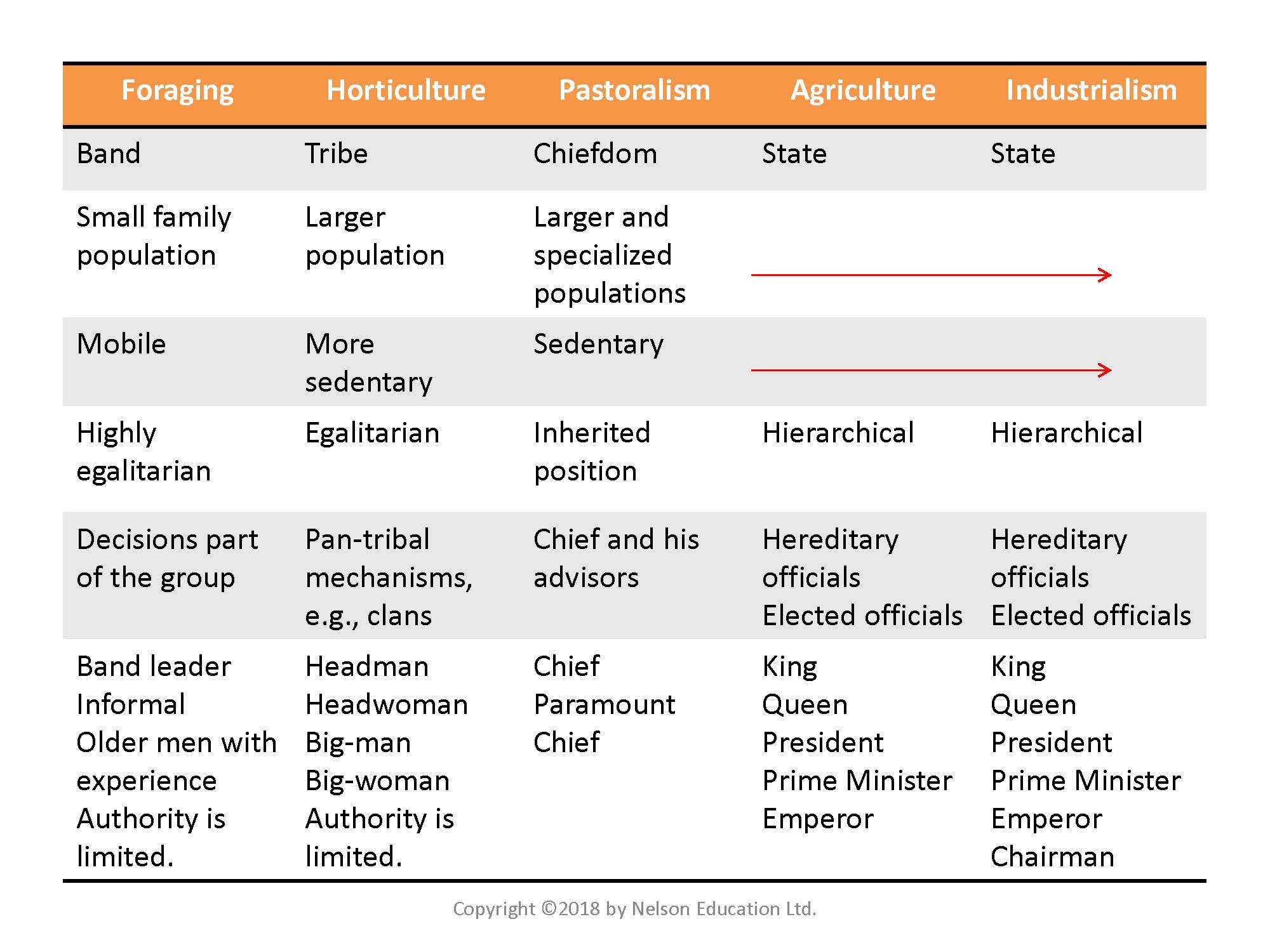 image of a chart describing various aspects of Foraging, Horticulture, Pastoralism, Agriculture and Industrialism
image of a chart describing various aspects of Foraging, Horticulture, Pastoralism, Agriculture and Industrialism
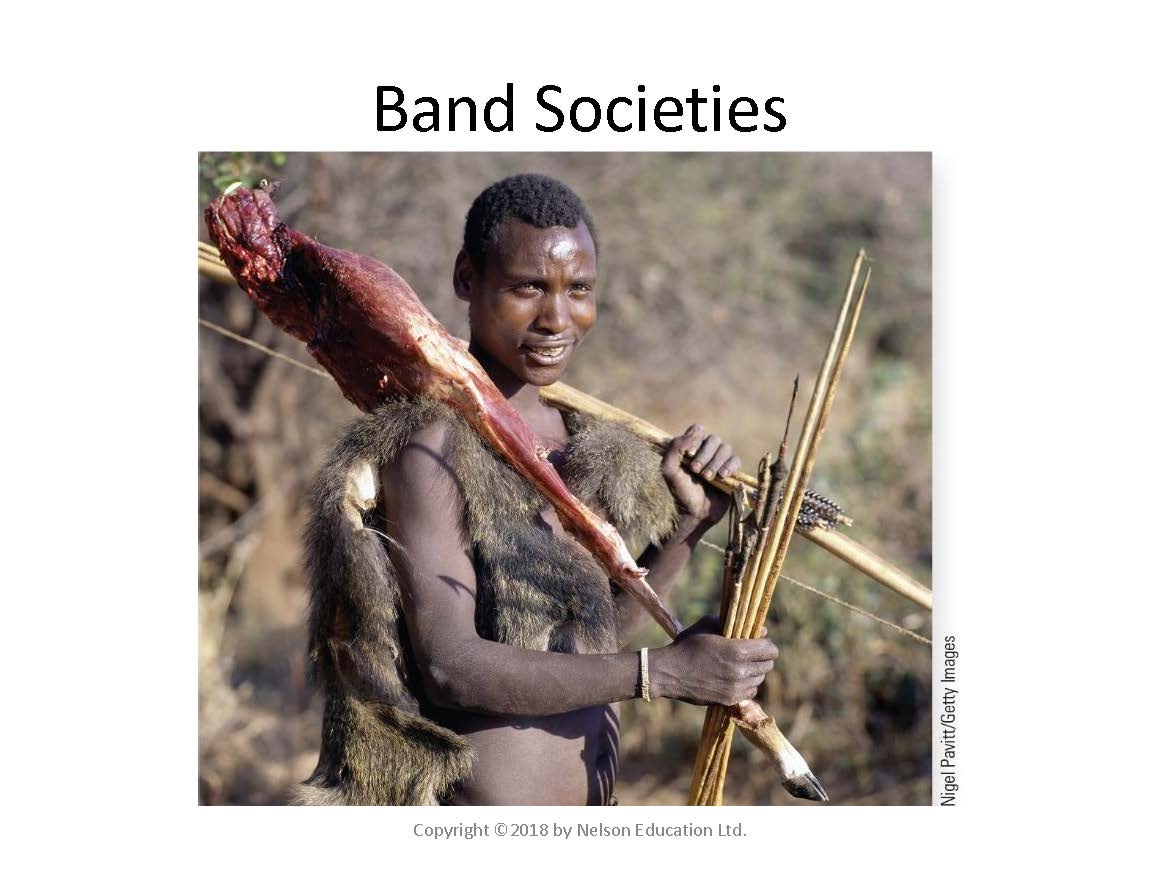 image of native African man with his hunt meat
image of native African man with his hunt meat
Egalitarian Societies: Bands
- Few differences between members in wealth, …, and …
- Bands
- …
- Nomadic
- Lack formal … or …
- Modesty is …
- Interpersonal arguments …
- …
Band Societies
- It is the basic social unit found in …(foraging) …
- These societies are characterized by … and having no …
- Most bands number between … and …
- associated with …, distribution systems based …, and …
- associated with …, distribution systems based …, and …
- Conflicts within bands are … and …
- Bands are integrated by … and …, and not …
- have the least … and …
- have the least … and …
- Leadership roles in …
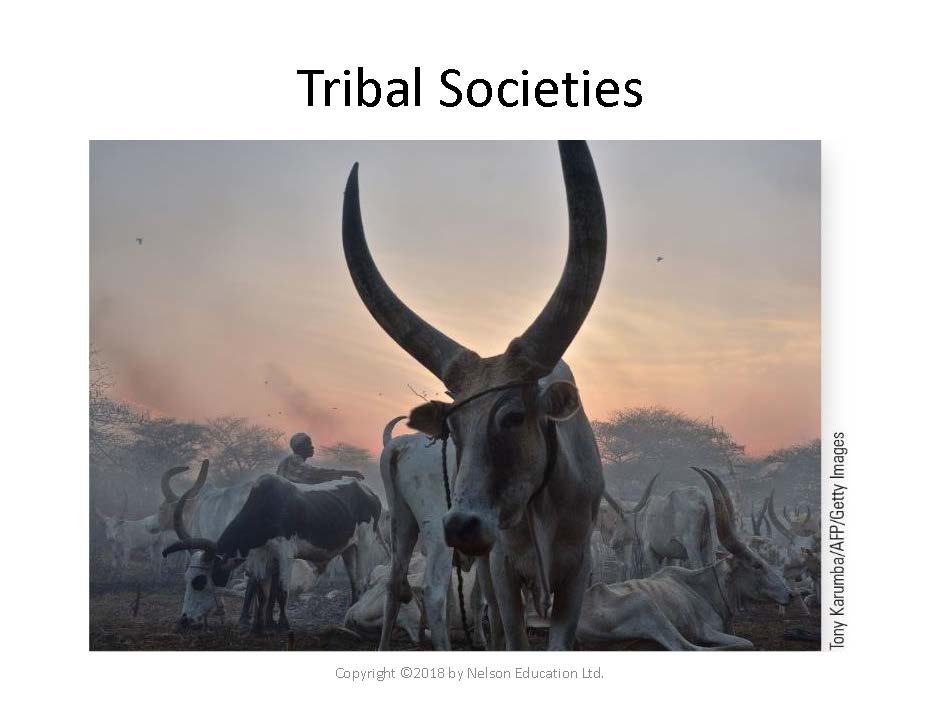 image of cattle herd
image of cattle herd
Example Tribal Societies
- Cattle are traditionally a source of … of … and …, who for generations have r…, and fought and killed for … and prestige that … is perceived to carry.
Egalitarian Societies: Tribes
- Tribes
- …
- 100 - … people
- … government
- Leadership roles open, …
- Social integration through …, men’s …, formal …, and …
- …
Tribal Societies
- Most commonly found among … (among food producers) and …
- Larger and more …
- Composed of a number of … and …
- Have certain … that cut across a number of local segments and …
- Leadership is … and not vested …
Law in Tribal Societies
- Use …, …, or divine …
- … consists of raids or feuds both … and …
- Example: video on the Pokot’s traditional way of resolving conflict
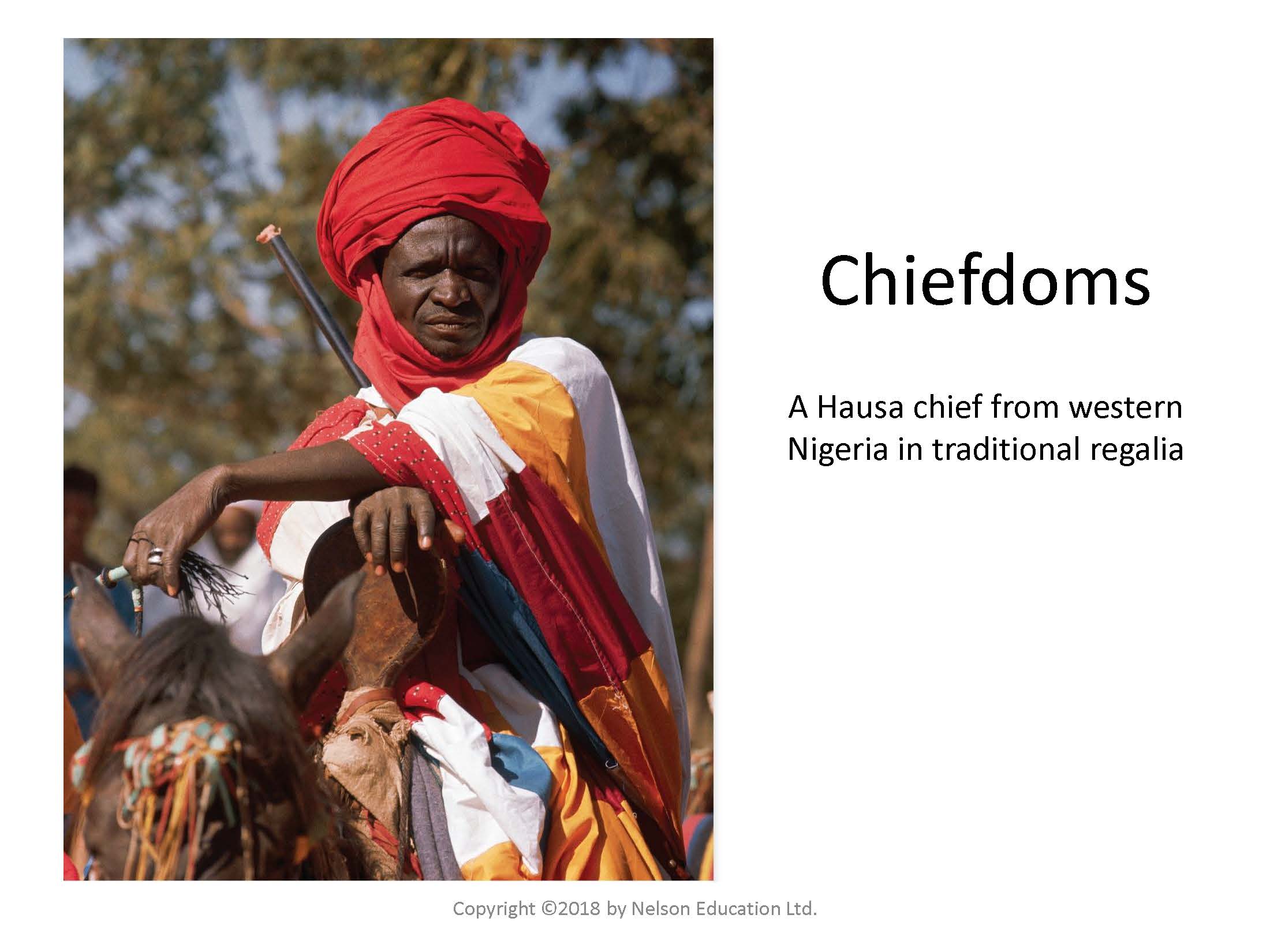 image of a Hausa cheif of western Nigeria
image of a Hausa cheif of western Nigeria
Ranked Societies: Chiefdoms
- Greater differentiation between … and …, …
- Chiefdoms
- …, may be hereditary
- Economic redistribution
- Social integration through … and …
- …, may be hereditary
CHIEFDOM
- … authority is likely to reside with a single individual or chief and …
- Involves a larger and …
- More formal and …
- Tend to have quite …
- … integrate a number of local communities in a …
- Made up of … that differ from one another in …
CHIEF
- …, and the chief and … and … elite
- Involves a system of …
- Usually supported by …
- Internal … are …
Stratified Societies
- Elites (…) control … that sustain life
- Ex: Caste systems
- Membership is determined by birth, no movement from one to another (such as in class systems);
- endogamous marriage
- Membership is determined by birth, no movement from one to another (such as in class systems);
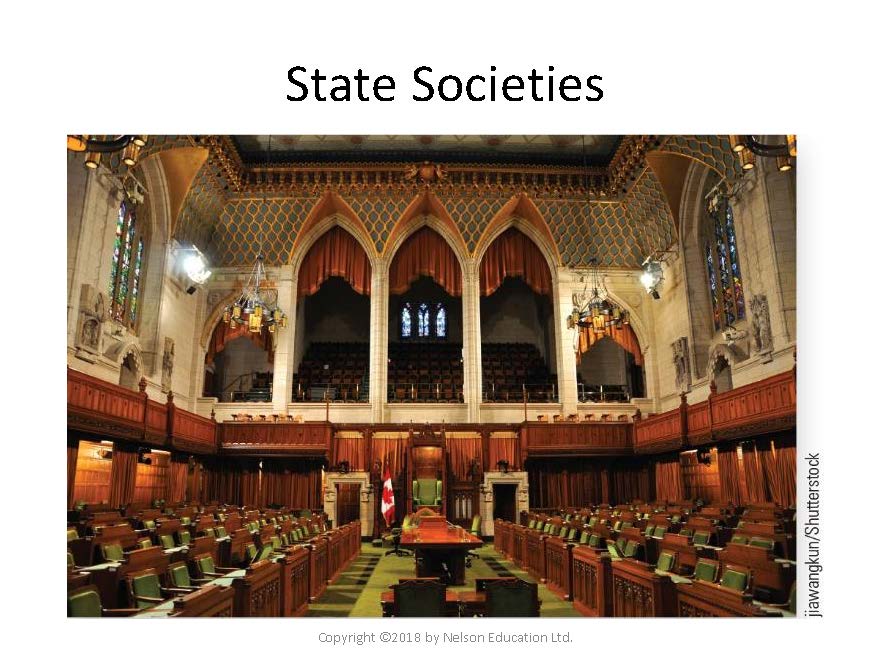 image of Canadian Parliament
image of Canadian Parliament
Stratified Societies: State
- State
- Political power is … that has a monopoly over …
- Large, …
- Complex economies (often market economy)
- …
- Intensive agriculture or …
- Defined geographical …
- Political power is … that has a monopoly over …
- Heads of state, …
- … bureaucracy handles …
- Taxation or …
- Ideologies …
- Nation is not … with …
- Nation is …, …, history, …
- How do states form?
- … minority controls …
- Increased agricultural ….
- … were the original subjects of state …, i.e. state controls …
- Loss of … and …
- … minority controls …
- Law is … and …, …
- Warfare is …
- led to acquisition of …
- led to acquisition of …
- Tendency toward instability
- Extreme … in wealth, use of …, stripping of …, …
Types of State Societies (A)
- Autocratic state: … and denies popular …
- Totalitarian state: the state recognizes … and … and …
- Dictatorship: …
Types of State Societies (B)
- Monarchy: the power rests … inherited
- Theocracy: … or God
- Representative democracy: a form of government in which power …, who … members of their society to … through some …
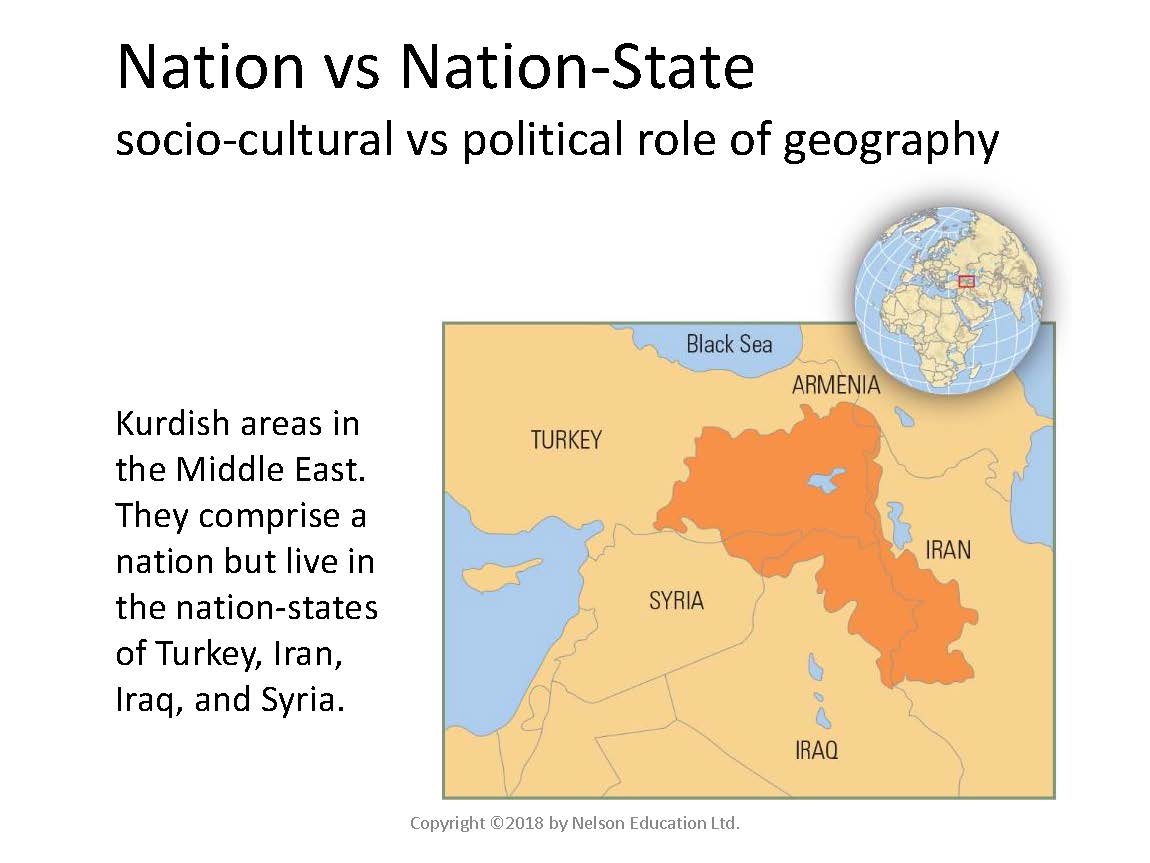 image of Kurdish areas in the Middle-East
image of Kurdish areas in the Middle-East
Nation vs Nation-State
- What is the difference between a nation and a nation-state?
- What is the difference between a nation and a nation-state?
- What is the one factor that confuses the issue? (Poly ethnicity)
- What is the one factor that confuses the issue? (Poly ethnicity)
- In a polyethnic nation-state, how do you create a sense of allegiance to the larger political and geographic entity that overrides the importance of ethnic identity?
Nation: … (…)
Nation-state: a … entity as well as a … that has …
Polyethnic: people from many … living within the …
- Few of the … nation-states in the world have populations with …
- Few of the … nation-states in the world have populations with …
Issues began in the …th and …th centuries when … divided the world into … and … with little regard …
A major challenge (for many nation-states) contain within their … that seek independence or …, as illustrated by the … in Canada and the … in Turkey.
9.1 Nations and Nation-States
Of the four levels of political organization we have looked at, the state is the most formal. In this system, political power is centralized in a government who oversees most functions of society. States will develop in societies with large, ethnically diverse populations and are characterized by complex economies that can be driven by command or by the market.
Throughout your life you may have heard the terms state and nation used interchangeably. It is important to note that they are NOT the same thing. A state is a coercive political institution; whereas a nation is an ethnic population. Also of important note, however, is that the vast majority of states in the world, including the United States, are multi-national.
Learning Lab
In this Learning Lab, students will engage in a group discussion that focuses on a different perspective for resolving conflict. To begin, watch the video below - as you watch the video, consider the following questions (these will serve as the focus for the discussion):
Questions for Consideration:
As you watch, consider:
- How effective you think the approach is?
- Would this approach work among a tribe that are farmers?
- Can you see any parallel approach in urban contemporary societies? Could that approach work? Why or why not?
Activity: Watch and Reflect
- Resolving Conflicts the Traditional Way {-}
In this video, we examine an example of conflict resolution that comes from the pastoralist Pokot tribe in Kenya.
Note: Students will be assessed, during Learning Lab’s, based on the “Participation” criteria. This criteria can be found under the Assignment tab at the top of the page - it is important to review this information prior to the Learning Lab.
9.2 Assessment
Unit Test #4
Each student is required to complete the final unit test at the end of Unit 9.
Additional information can be found by selecting the Unit Test #4 tab at the bottom of the page. Here, you will find instructions for taking the test.
This test will represent 10% of your overall grade for the course.
Please note that this unit test will focus on all content covered in Units 8 and 9. Be sure to take some time to review the content in each section.
Checking Your Learning
Before you move on to the next unit, check that you are able to:
Identify the four levels of socio-cultural integration (band, tribe, chiefdom, and state) and describe their characteristics.
Compare systems of leadership in egalitarian and non-egalitarian societies.
Describe systems used in tribes and chiefdoms to achieve social integration and encourage connections between people.
Assess the benefits and problems associated with state-level political organizations.
Explain the difference between nations and nation-states.